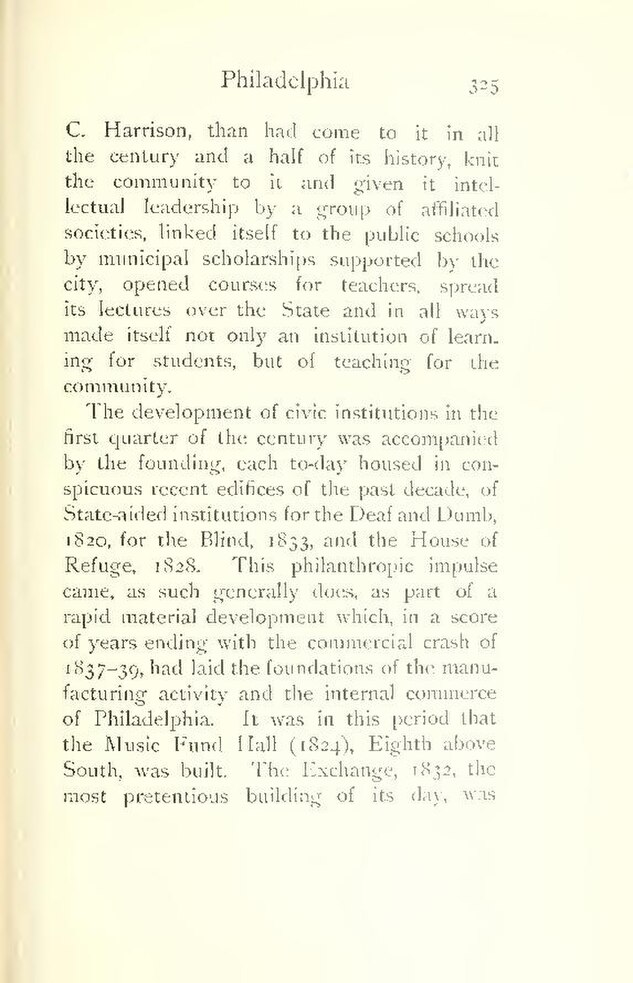C. Harrison, than had come to it in all the century and a half of its history, knit the community to it and given it intellectual leadership by a group of affiliated societies, linked itself to the public schools by municipal scholarships supported by the city, opened courses for teachers, spread its lectures over the State and in all ways made itself not only an institution of learning for students, but of teaching for the community.
The development of civic institutions in the first quarter of the century was accompanied by the founding, each to-day housed in conspicuous recent edifices of the past decade, of State-aided institutions for the Deaf and Dumb, 1820, for the Blind, 1833, and the House of Refuge, 1828. This philanthropic impulse came, as such generally does, as part of a rapid material development which, in a score of years ending with the commercial crash of 1837-39, had laid the foundations of the manufacturing activity and the internal commerce of Philadelphia. It was in this period that the Music Fund Hall (1824), Eighth above South, was built. The Exchange, 1832, the most pretentious building of its day, was
